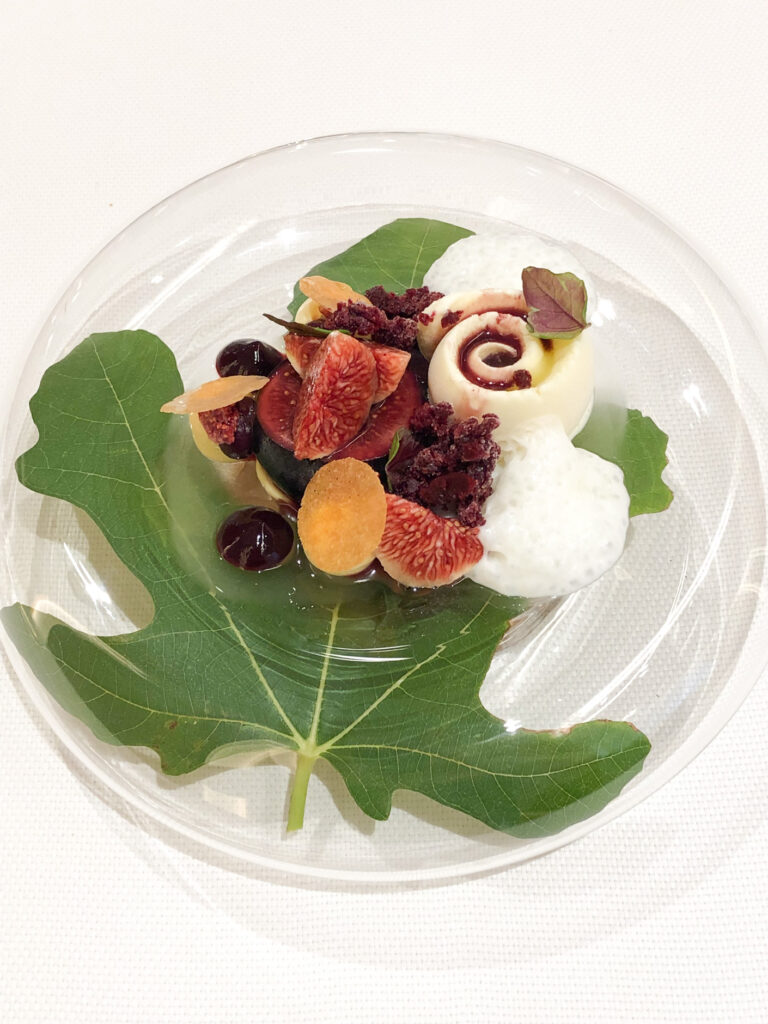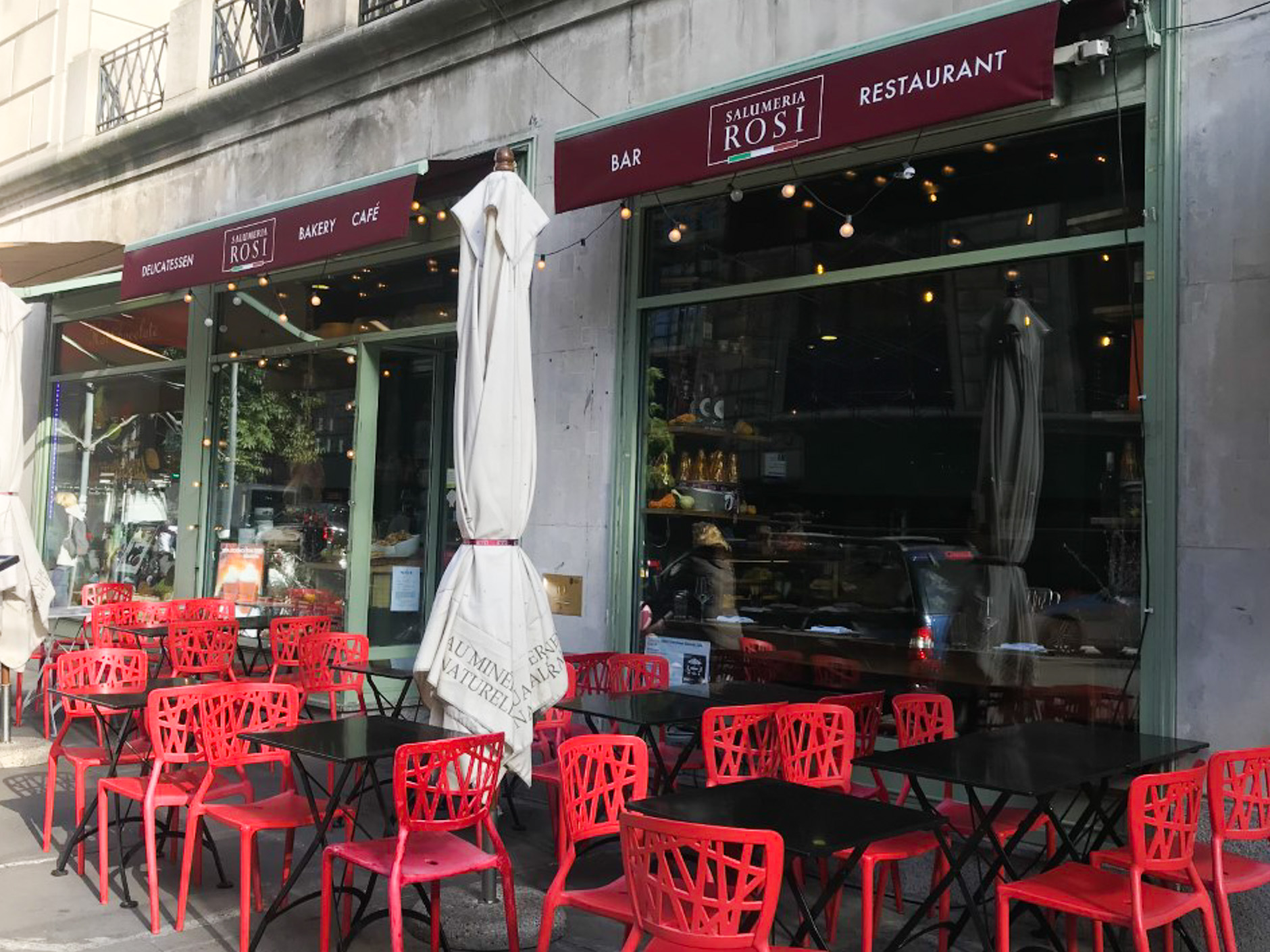Dijon – the ‘capital’ of Burgundy and only 90 minutes from Paris – is an underrated city of gastronomic joy. There is the mustard of course but also the pain d’épices (spice cake), the Cité Internationale de la Gastronomie et du Vin, some of the best wine in the world and a dining scene encompassing classic restaurants and young whippersnappers like modern bistro Monique (worth a visit).
Restaurant William Frachot is arguably Dijon’s premier restaurant, and the food and service are indeed exceptional. It’s a slight shame then the ambience on this visit felt as drab as an investment bank. To add to its arid atmosphere, Maille is rubbed into your eyes as the chairs, curtains and walls are all variations of yellow contrasted against grey carpets (a colour scheme once embraced by Eurostar). Eye-less owls are omnipresent with a small model of the wise bird placed on each table, presumably to remind tourists of Dijon’s mascot (the famous “chouette” is carved into the side of the Notre-Dame church; local legend has it that if you touch it with your left hand it will bring you good luck). Sitting down and taking in this bizarre setting, I could only think this is another case of an excellent chef in need of a better interior designer, and perhaps better PR too; on this occasion the total number of diners was three. Three. Were it not for the piped music you could hear your watch ticking or even a flatulent owl.
That said, the hospitality at Restaurant William Frachot is truly excellent. Just an example: while attempting to navigate the tome of a wine list, the sommelier calmly suggested a light red Burgundy as a short circuit, since it was lunchtime. Although he agreed that ordinarily a Chablis would complement the opening courses, and especially the fish, he recommended a Passe-Tout-Grains as the Gamay and Pinot Noir would cut across both the tomato course and perch (and he was right). Sommeliers can sometimes cross that line from trusted wine counsel to salesman but there was no whiff of up-selling here (or it was very carefully disguised).
But first, Crémant de Bourgone (a compulsory aperitif when in town), a beetroot amuse bouche and Frachot’s incredibly delicious take on oeufs meurette (essentially a posh breakfast of poached egg, bacon, mushrooms in a red wine sauce: what could possibly go wrong?). Right from the start it was clear this would be a lunch that means lunch, and worthy of its 115 Euro price tag.
The corporate ambience aside, the food, wine and service are fantastic
And then that scene-stealing tomato course – the ne plus ultra of plant-based dishes (surprising too, since veganism has only until recently been anathema to the French). Here, Frachot showcased the tomato in fifty shades: tomato flesh, dust, ketchup, you name it, and a tomato and strawberry tartlet on the side. This was no mere fridge-raid dish cobbled together in a drunken moment of fumbling desperation; each adaptation of the humble tomato was there for a reason, making it greater than the sum of its parts. Clever stuff.
Frachot, who has a reputation as a seafood specialist, clearly used his fish course to show off. Fair play. Slightly pretentiously titled “Partie de pêche en rivière”, the plating was something to behold with an arrangement of different fish in pintxos-size mouthfuls, from the aforementioned perch to monkfish liver, and a delightfully complex bisque. It almost felt like catching fish by a river – if only the restaurant could evoke the sense of Gone Fishing rather than a luxury car showroom.
And then, poulet de Bresse with a wonderful jus. This chicken, as served at Otto’s too, is the very best you can get: with AOC status, these chickens are free to roam and absolutely must not be fed hormones, chemicals or antibiotics. Frachot and his team did the bird justice with very skilled cookery, enhancing those inherent gamey notes.
Skipping over the optional cheese trolley on this occasion (there was a TGV to catch), a seasonal dessert of figs and fig leaves on a transparent discus impressed in its visual execution and echoed the tomato course’s multiple use of a single ingredient.
It’s all very Michelin, and it’s quite clear to see why this place has consistently been awarded two stars for the last decade. But strangely there doesn’t seem to be a steady flow of human lava burning down its doors for a reservation. Whilst there’s speculation about the true reasons behind the impending closures of Marcus and Le Gavroche in London, one wonders if those ‘death of fine dining’ rumours have not been exaggerated. Perhaps the same problems could be happening on Michelin’s home turf.
It could be a number of reasons. Some posit that city centre restaurants are suffering because everyone’s working from home these days, and this restaurant is slap bang in the centre of Dijon. Or perhaps it’s the sterile atmosphere putting off diners, exacerbated by the lack of natural light (Theo Randall at The Intercontinental suffers from the same affliction: I’m a huge fan of Theo Randall as a chef, but sadly the space where he serves his divine and generous Italian food is soulless). If this restaurant’s Harley Street waiting room feel could be swapped with the livelier vibe of, say, Le Pré aux Clercs in la Place de la Libération, it could be truly magical.
The corporate ambience aside, the food, wine and service are fantastic, and a four course lunch with multiple bonus bits is just over a hundred Euros (substantially less than a similar meal in Paris). At some feted French restaurants, such as Septime in Paris or Bouchon Racine in Farringdon, trying to book a table can be as fruitless as pinning a blancmange to a unicorn. You shouldn’t have such a booking challenge at Restaurant William Frachot, and if high-end restaurants of this culinary calibre may not be around forever, this is all the more reason for going if you’re in this corner of Burgundy.
Hostellerie du Chapeau Rouge
5 rue Michelet
Dijon, 21000
France
October 2023
by J A Smith









